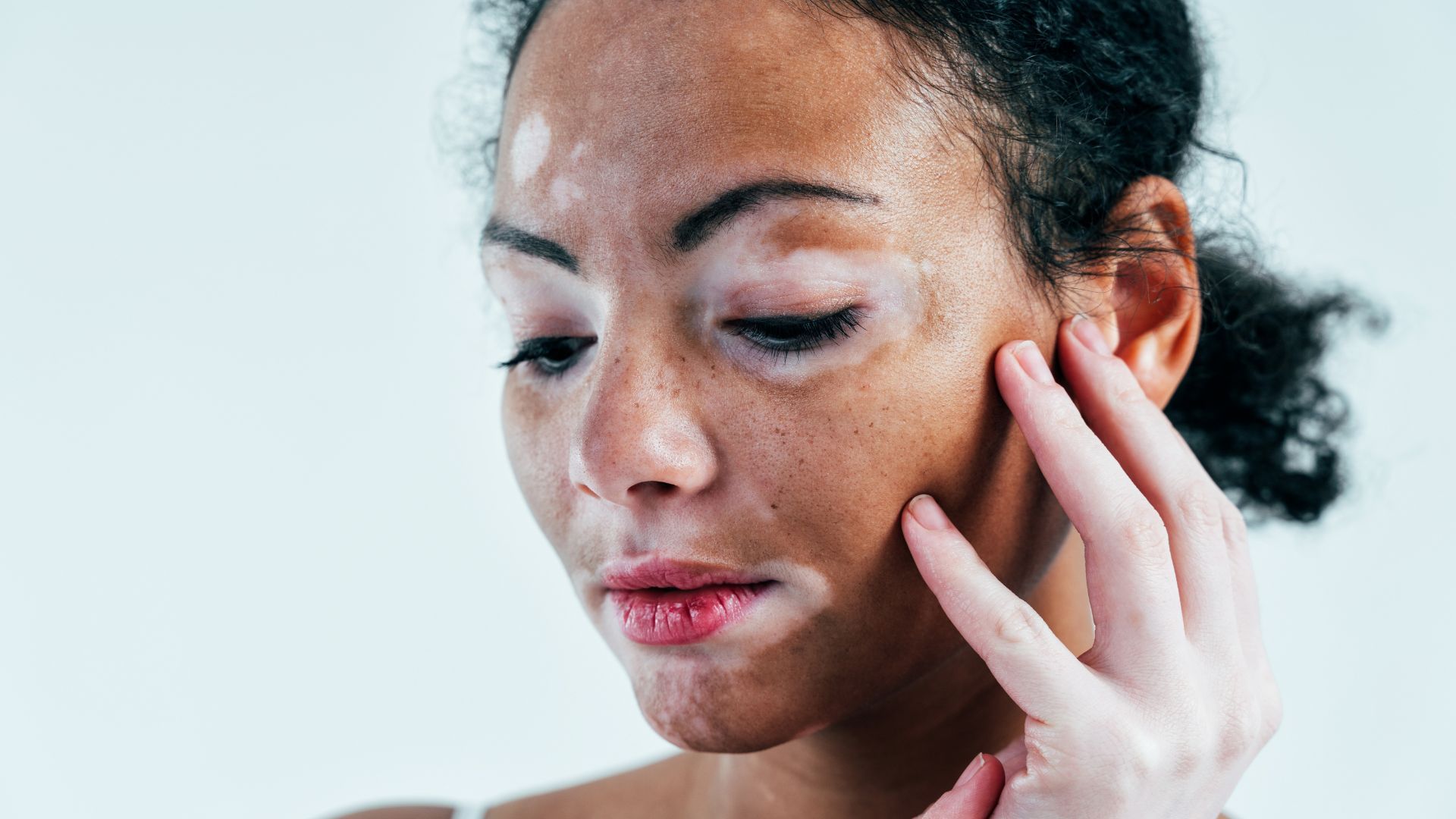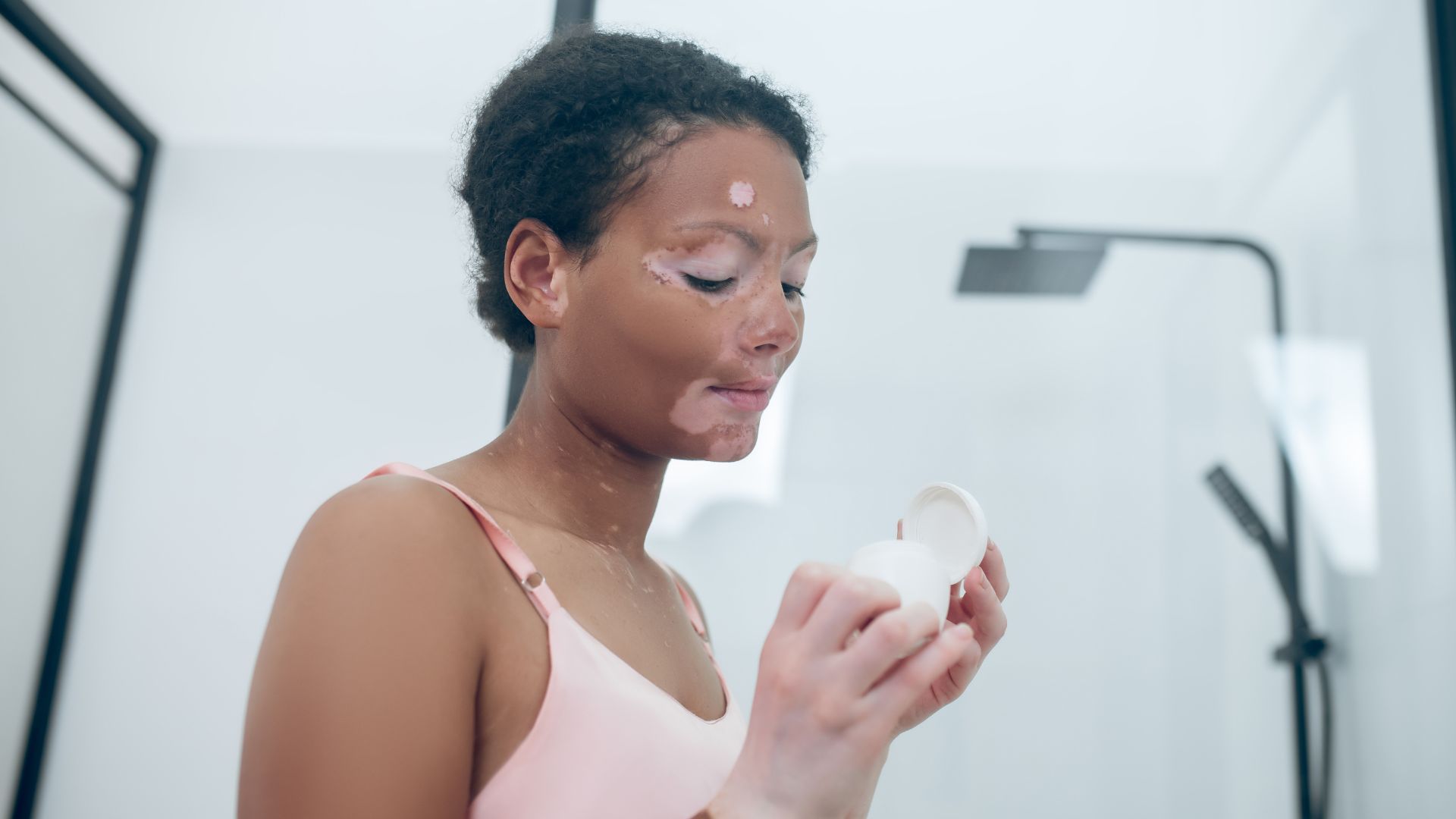How vitiligo affects your mental health
Vitiligo is a condition where the skin loses its pigments and appears as light-colored patches on the body. It is not contagious or threatening. Here’s everything you need to know.
October 29 2022 | Rachael RichardHow vitiligo affects your mental health
Vitiligo is a term used for a skin disorder that is visually seen as white patches. This usually begins on the hands, forearms, feet and then, the face. Vitiligo in a place that has hair can turn the hair on your body also white. It affects both men and women.
Irrespective of age, vitiligo can start at any point in life and can slowly progress. Most commonly it is seen in people between the ages of 10 to 30 years. Studies have shown that multiple studies characterize the emotional and psychological burden that is experienced by people who have vitiligo.
Vitiligo occurs when melanin (the pigment-producing chemical in the body) is less available and the melanocytes (skin cells that produce melanin) are damaged by the body’s immune system. Initially, it starts as small white patches on the hand or forearm and progresses slowly, spreading to other body parts. Sometimes, the large patches stay, widening and spreading but remain in the same place for a long period. On the other hand, the small patches can shift and change locations over time.
Types of vitiligo
General type: Patches appear in different places on the body.
Segmental type: Patches are seen on either one side of the body or confined to one area on the body.
Mucosal type: Patches are seen on the mucous membranes of the mouth or the genitals.
Focal type: A rare type where the patches are seen in a small area and don’t spread in a pattern for one or two years.
Trichome type: A colorless or white centre, light pigmentation and an area of normal skin color.
Universal type: Almost 80 percent of the body lacks pigmentation. This is a rare condition.
Causes of vitiligo

Genetic: Almost 30% of vitiligo cases run in families. Certain factors that increase the chances of vitiligo can be inherited.
Autoimmune conditions: Antibodies present in the affected person’s immune system can destroy the melanocytes.
Issues related to the nerve: Any substance that can be lethal to the melanocytes may be emitted at the nerve endings in the skin.
Self-eradication: A fault in the melanocytes triggers them to eradicate themselves.
Symptoms of vitiligo
Depigmentation: Areas around the eyes, mouth, or nose lose color and form patches.
Greying on patches on your head or face.
Trigger points are the use of a particular chemical that can signal the onset of vitiligo, stressful events and damaged skin, lesions, cuts and sunburns.
Treatment for vitiligo

Vitiligo has no cure. Techniques and tools are being developed for treating the condition by restoring an even skin tone. Here are a few therapies that are used:
Light therapy
Camouflage therapy
Surgery
Repigmentation therapy
Counseling
Apart from the treatment and medication prescribed by your dermatologist, you can follow these steps to help manage the spread of symptoms.
Apply sunscreen.
Try using self-tanner.
Avoid tattoos.
Reduce the use of hair dyes and bleaching agents.
Use clothes that protect you from harmful UV radiation.
Mental health and vitiligo
Complexion, skin color and skin tone are factors that are stigmatized by society. People who have skin conditions face a lot of stress as they are unable to meet standards. It takes a negative toll on their mental health affecting their self-esteem. It can cause anxiety and sometimes make them feel depressed. People who have vitiligo isolate themselves from crowds for fear of being hurt by hurtful comments or uncomfortable stares from the people around them. Children who have vitiligo are more prone to emotional hurt. Being mocked and bullied by friends who are unaware of the condition can affect the mental health of the child.
It may be hard to face reality, but give it a try. Talk to your dermatologist and connect with support systems for counseling. You can also practice mindfulness and acceptance commitment therapy. Embrace and love yourself, because it’s just you and your mental health that matter the most.
Do not let the patches define who you are, rather create your own identity. Remember you are beautiful inside and out.
Disclaimer : Beem Wellness provides general education on health and wellness. The content on this blog, website or any linked material is not intended and should not be considered, or used as a substitute for, medical advice, diagnosis or treatment. If you or any other person has a medical concern, you should immediately consult your health care provider.
In case of medical emergencies, please call 911.

